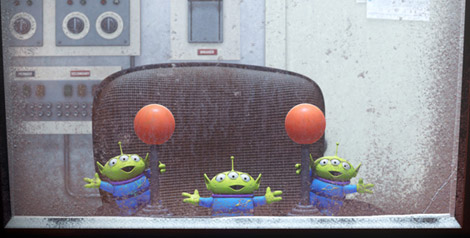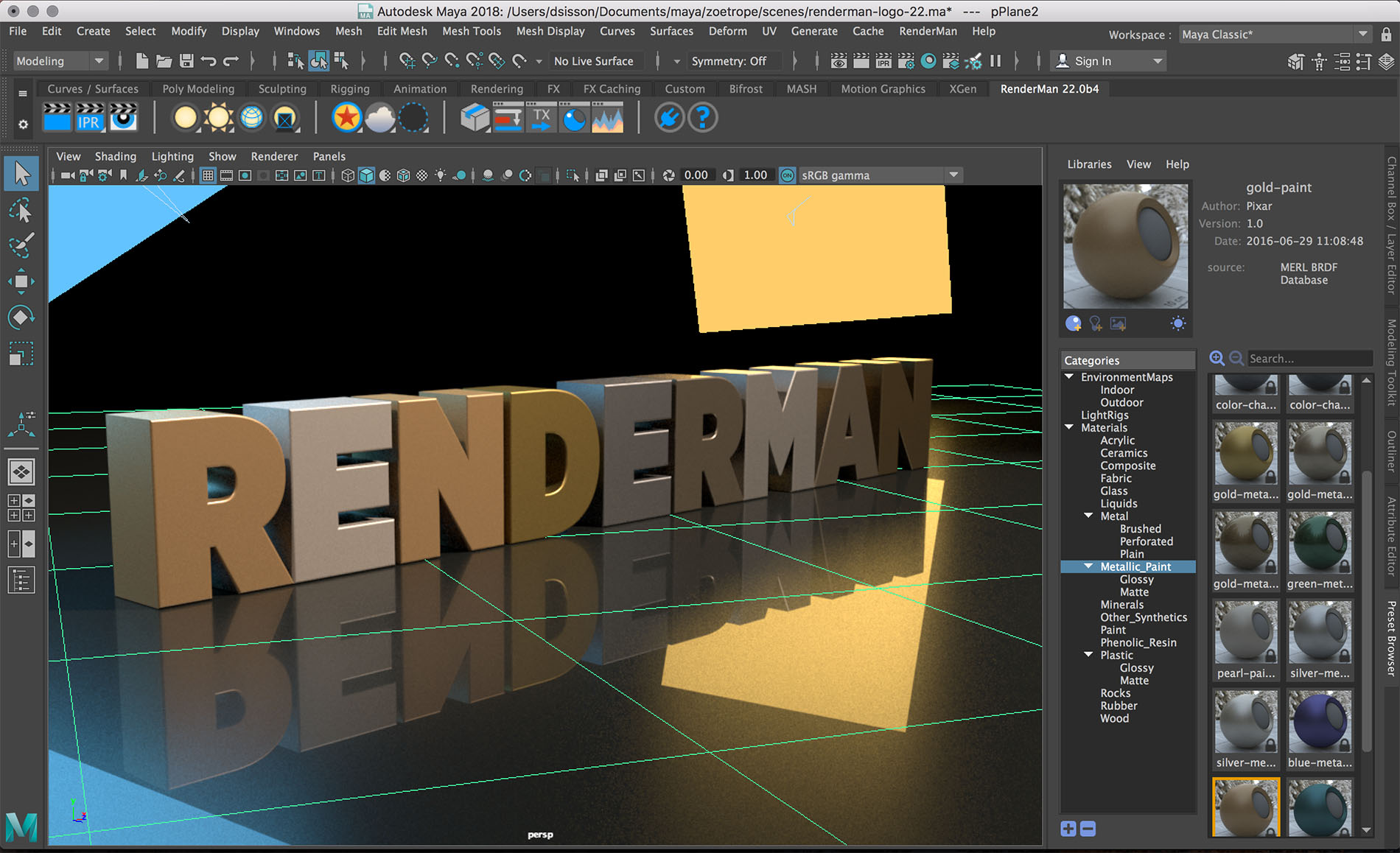- Renderman Toons Houdini Movie
- Renderman
- Renderman Free
- Renderman 22
- Renderman Download
- Renderman 24
- Renderman Logo
Purchase RenderMan direct from Pixar - Request A Quote; Purchase RenderMan directly from your Authorized Reseller; What is the pricing of RenderMan? RenderMan costs $595 per license, and provides access to the batch renderer and all of the interfaces to all supported authoring applications. Today, let's travel to Wailua Falls, Kauai, Hawaii in 360° VR 🌏 This. Is a HIGH resolution 360 photo, pinch in with your fingers and find me under the waterfall 😇 If you have ever fantasized about seeing a double-tiered waterfall, then get ready to turn your fantasy into reality at the gorgeous Wailua Falls. 1 1989-2016 1.1 1989-1994 1.2 1994-2014 2 2014-present Add a photo to this gallery Add a photo to this gallery Add a photo to this gallery Add a photo to this gallery.
'La Luna' is the timeless fable of a young boy coming of age in the most peculiar circumstances. Tonight is the very first time his Papa and Grandpa are taking him to work. In an old wooden boat they row far out to sea, and with no land in sight, they stop and wait. A big surprise awaits the little boy as he discovers his family's most unusual line of work. Should he follow the example of his Papa or his Grandpa? Will he be able to find his own way amidst their conflicting opinions and
timeworn traditions?
There are three characters in 'La Luna': a boy, his father, and his grandfather. At first glance, they are cut from the same mold. They wear overalls and hats; they carry brooms. But the contrast between them reveals their characters. Covered by the signs of age, the two adult men’s eyes cannot be seen. Nor can they see as clearly and widely as the boy, whose large eyes are unobstructed and clear. The grandfather moves his traditional broom with precision; the father wields a push-broom for increased efficiency. Both argue in front of the timid boy, whose curiosity and sense of wonder eventually lead him to discover joy.
Pixar has unveiled RenderMan 24, the next major update to the VFX and animation production renderer, during livestreams at this week’s RenderMan Art & Science Fair.
The release, which is due to ship early next year, will include several important new toolsets, including a new sylised rendering system, and Lama, a new layered material system developed at ILM.
Pixar has also confirmed that RenderMan XPU, its long-awaited new combined CPU and GPU rendering system, will form part of the release, as will a new official integration plugin for Blender.
Stylized Looks generate anything from toon shading to brush stroke effects
Beginning with the feature that has been most widely previewed already, RenderMan 24 will support Stylized Looks, a new toolset for generating non-photorealistic renders.

It is capable of effects ranging from conventional cartoon shading to hatching or brush strokes, with the hatching reacting to emulated light effects, and supports custom AOVs and display filters.
Pixar describes it as “super-customisable”, noting that work “usually done in comp” to stylise an image can now be performed directly during rendering.
However, the toolset will only be available to users of the commercial edition of the software: something Pixar attributed to the work being a partnership with third-party developer LollipopShaders.

Lama: a robust new modular system for layered materials developed at ILM
RenderMan 24 will also feature Lama, a new layered materials system developed at Industrial Light & Magic.
Pixar described it as a “much more robust layering system” than the existing PxrLayerSurface material, avoiding the need to use a single material with a “ton of parameters”.
Instead, Lama enables shading TDs to build up layered materials via a modular workflow, wiring together a series of BxDF (Bidirectional Distribution Function) nodes developed by ILM.
They include BxDFs for dielectric and conductor materials, and a Lama version of the old PxrDisney shader with support for subsurface scattering.
Lama also supports dispersion: a common request among RenderMan users.
Users can write their own custom nodes, but Pixar says that even out of the box, Lama can replicate most of the existing “monolithic” BxDFs included in the software.
New Phasor Noise, Hex Tiling and Bump Mixer patterns
RenderMan’s existing library of procedurally generated material Patterns has been rewritten to fully support OSL (Open Shading Language).
Execution is accelerated on both Intel and AMD CPUs vai the SIMD AVX-512 extensions.
New patterns available included Phasor Noise, developed at ILM during production on Star Wars: The Rise of Skywalker, and Hex Tiling, intended to blend tiled textures seamlessly.
There is also a new Bump Mixer, which replaces the old bump map handling system, and is described by ILM as meaning that users “don’t have to execute bump code three times”.
New live statistics system for TDs, support for blue noise sampling
TDs get a user-customisable new statistics system, which displays memory usage, rays traced and other key metrics in real time during render sessions.
Other changes include support for blue noise sampling for interactive renders.
The feature, also rencently introduced V-Ray 5, results in more even noise distribution in renders with small numbers of samples, generating a usable preview image more quickly.

Renderman Toons Houdini Movie
Support for ACES and VFX Reference Platform CY2019
For pipeline integration, RenderMan 24 introduces support for the industry-standard ACES colour management system. The implementation supports lights, patterns, textures and the ‘it’ render window.
Pixar is also “aiming for” the CY2019 spec for the VFX Reference Platform, plus OpenColorIO 1.1.1 from the 2020 spec.
New CPU/GPU rendering system RenderMan XPU will ship with version 24
RenderMan 24 will also ship with RenderMan XPU, Pixar’s long-awaited heterogeneous rendering system.
First announced in 2017, XPU is intended to enable RenderMan to generate renders interchangeably on CPU, GPU or both CPU and GPU together.
The initial release will be focused on interactive rendering for look development work, but Pixar says that XPU is ultimately intended to replace RenderMan’s existing RIS architecture for final-frame rendering.
In Pixar’s demo scenes, XPU renders were up to 10x faster than RIS on one of the studio’s standard artist workstations with a 24-core Intel Xeon Platinum 8268 CPU and Nvidia Quadro RTX 6000 GPU.
However, the speed boost depends heavily on the geometric and shading complexity of the scene, and whether you are rendering using CPU, GPU or both.
On release, XPU will support most key RenderMan features, although not “exotic” geometry types like blobby surfaces, Light Path Expressions, light filters or volumetrics.
Renderman
To use it, you will need to be working on Windows or Linux: XPU requires a Nvidia GPU, so it won’t support the AMD GPUs in current Macs, and initially, Pixar isn’t supporting Apple Silicon CPUs.
Integration plugins for Maya, Houdini, Katana, Mari – and now Blender
The Maya, Houdini and Katana integration plugins all get the features from core renderer, with RenderMan 24 for Houdini also extending support for Houdini’s new Solaris look development toolset.
New features due to be supported within Solaris include DeepEXR output and the Preset browser. Users will also be able to edit or switch between AOVs during render sessions.
Renderman Free
The release will also bring an entirely new integration: an official Blender plugin, which replaces the unofficial – and not recently updated – version. We’ll provide more details in a separate story.
Pricing and availability
RenderMan 24 is due in beta for registered users of the commercial edition in December 2020, with a full release in “Q1 2021” for Windows 10, CentOS/RHEL 7.x Linux and macOS 10.14+.
RenderMan XPU and the new Blender integration plugin will ship with version 24.
Renderman 22
The current release, RenderMan 23.4, is is available for 64-bit Windows 8.1+, CentOS/RHEL 7.2 Linux and macOS 10.13+, with integrations for Maya 2018.3+, Houdini 17.0+, Katana 3.0+ and Mari 4.5+.
Renderman Download

New node-locked or floating licences cost $595. There is also a free non-commercial edition of RenderMan, which can be used for tools development.
Visit the RenderMan product website
(No extra information about RenderMan 24 at time of writing)
Renderman 24
Download the free non-commercial version of RenderMan (Registration required)
Renderman Logo
Related posts:
Tags: ACES, AMD, animation, AOV, AOVs, Apple Silicon, AVX-512, Bidirectional Distibution Function, Blender, blue noise dithering, blue noise sampling, BRDF, brush strokes, BSDF, bump map, Bump Mixer, BxDF, color management, Conductor, CPU, CPU and GPU, CY2019, DeepEXR, dielectric, dispersion, free, geometry, GPU, hatching, heterogeneous computing, Hex Tiling, Houdini, ILM, Industrial Light & Magic, integration, interactive rendering, Katana, Lama, layered materials, Light, Light Path Expression, lighting, limitations, Linux, live statistics, Lollipop Shaders, LollipopShaders, look dev, look development, macOS, macOS 10.14, Mari, Maya, modular material, new features, node-based material, non-commercial edition, non-photorealistic rendering, NPR, NVIDIA, OCIO, Open Shading Language, OpenColorIO, OSL, pattern, Patterns, Patterns library, Phasor Noise, Pixar, plugin, Preset Browser, price, primitive, production renderer, PxrDisney, PxrLayerSurface, release date, render preview, render statistics, rendering, RenderMan, RenderMan 24, RenderMan Art & Science Fair, RenderMan for Blender, Renderman for Houdini, RenderMan for Katana, RenderMan for Mari, RenderMan for Maya, RenderMan XPU, restrictions, shading, SIMD, Solaris, SSS, Stylized Looks, stylized rendering, subsurface scattering, TD, texture, texture mixing, tiled texture, toon shading, V-Ray 5, vfx, VFX Reference Platform, VFX Reference Platform 2019, visual effects, Volume, volumetric, Windows
